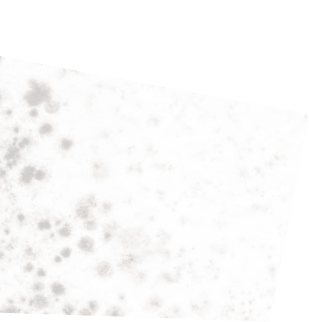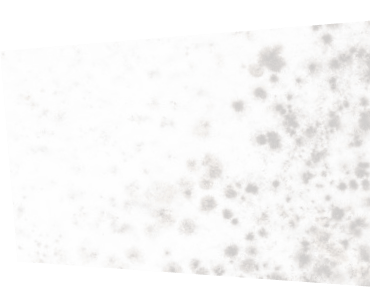You may have invested time and money into the exterior and interior of your home, but have you ever considered the quality of the air you breath while inside the home? It is a well-known fact that indoor air quality in residential homes is sometimes worse than the quality of the air outside. Certain toxins and pollutants have no detectable smell or odor and can easily pollute the indoor air. You could be unaware that you are breathing low quality or toxic air on a consistent basis and checking air quality several times a year will ensure you are completely informed and aware of the quality of air inside your home.
Indoor air quality is the key to healthy living
You can’t argue the fact that air is an important and critical part of life. Governments and organizations are taking steps to reduce the environmental impact daily life has on the planet. Air quality inside your home is just as important as the air you breath outside the home and exposure to polluted air while you sleep and live your daily life can drastically reduce the quality of life for you and other residents who live in the home. Busy and active lives means more people are considering how to live healthy lifestyles and clean and pollutant-free air is now a top consideration for homeowners. Testing your home’s air is the first step to creating a healthy and safe environment for you and those living inside the home. High quality air will also reduce the number of illnesses in your household and decrease recovery time when injured or sick. Improved air will also regulate your sleep patterns and could result in a deeper more restful sleep which is key to living a healthy lifestyle.
Common causes for bad indoor air quality
Residential homes are entirely susceptible to toxic and polluted indoor air. A healthy space is dependent on a constant flow of clean air circulating around the entire home. Whether you are purchasing an older resale or moving into a newly built residence, it is advisable to perform a thorough air quality check to confirm a safe living space. Bad indoor air quality can be caused by a number of reasons such as:
- Broken or improperly installed wall and attic insulation
- Malfunctioning and inefficient heating cooling systems
- Dirty air ducts and registers
- Cracks and broken seals that allow outdoor air to enter the home
- The presence of mold in areas of excess humidity
- Clogged and broken furnace and humidifier filters
- Improper venting of natural gas appliances
- Asbestos in building materials in older homes
- Certain off brand paints and household chemicals
With so many possible factors that can reduce air quality, it makes sense to put some time and investment into air quality management. Regular maintenance of air flow elements in your home is necessary to keep the inside air safe and healthy.
These different toxins and pollutants that can be found in your air. There are many different causes that can reduce the quality of your home's air and each creates its own set of airborne toxins and pollutants.
Common pollutants found in residential properties are:
Second hand smoke: As cigarettes burn, different toxins and chemicals are created and released into the air and settle into fabrics and other surfaces. Smokey and stale odors are telltale smells for second hand smoke.
Airborne mold bacteria and spores: Undetected mold spreads easily and release spores and bacteria into the household airstream. Dark and inaccessible areas with excess humidity are ideal conditions for mold to take hold of surfaces.
Radon: Radon atomic gas is actually one of the major causes for indoor air pollution in North America. Building materials that off gas and breakdown could contribute to radon inside the home's air.
Carbon monoxide: Gas powered appliances such as stoves and hot water tanks require proper venting to exhaust out combusted fuel vapor. This odorless gas is highly toxic and can result in death if not ventilated properly.
Volatile organic compounds: Household products such as cleaners and paints could eventually release VOCs into the air which would gradually decreased the quality of the air inside the home.
Micro dust and other small scale particles from materials like asbestos could also contaminate the air.
Bad air creates short and long term health problems for residents
Living in a home with low quality air poses many risks to you and your family. Inhaling bad air even for just a short time can create health problems for you and anyone else living in the home. Toxic air can create short term health issues such as:
- Shortness of breath
- Constant dry cough and irritated throat
- More colds and flus in the home
- Skin and eye irritation
- Hay fever and allergy type symptoms
- Fatigue from disrupted sleep patterns
*If you suffer the occasional sports related injury, your recovery time may also increase when exposed to low quality polluted air.
Breathing in toxic air for longer periods can create more chronic health problems such as lung disease and cancer, chronic fatigue, joint pain and muscle problems as well as emotional and mental problems from irregular sleep patterns. Managing air quality in your home should be a priority and performed on an ongoing basis for maintaining a healthy environment.
The most accurate way to test indoor air quality is through a trained professional
Your home’s air quality is an important concern because of the adverse health effects and quality of life issues bad air can create. Regular testing of your home’s air is recommended to keep pollutants and toxins in check. There are a few do it yourself kits that can check the air but a certified and trained professional will have the latest equipment and testing tools to thoroughly check the air for all possible pollutants and toxins. Professionals in the industry will also have the latest and most up to date air quality management solutions to correct any problem and prevent any future bad air issues at your property. Hiring a specialist who understands residential air quality and the potential issues that could happen is your best first step for a healthy and safe environment at home.
Quicks fixes that could improve your indoor air quality
Managing your home's air quality should be done as part of any routine maintenance at the home. There are some things you can do to keep air quality levels high and maintain a safe and healthy environment:
- Replace furnace and humidifier filters every 3 months with high quality allergen media
- Perform duct and register deep cleaning every spring
- Schedule furnace and air conditioning maintenance once per year or as required by the manufacturer
- Check exterior venting pipes for gas powered appliances for cracks and fraying once or twice a year
- Make sure carbon monoxide detectors are working and are placed correctly throughout the home according to local regulations
- Be aware of high humidity areas in the home that may be susceptible to mold growth
- If you or anyone at home is suffering from unusual health symptoms or fatigue, managing air quality at the home may improve the air. More serious CO leaks should be diagnosed and repaired by air certified air quality professionals.
Renovations and upgrades can reduce air quality in the home
Renovating and upgrading is one of the hotter trends in real estate and many older homes are undergoing modern transformations but this type of construction creates many opportunities for reduced air quality. Improper demolition and disposal of old construction material could release micro-particles and toxic dust into the home’s air causing a bad air quality situation. As well, incorrect installation of drywall, insulation and other structures and materials could contaminate the air stream with their own off gases and dust.
If you are considering upgrades and renovations at your home, ask your contractor the right questions like:
- What types of eco-friendly materials will be used?
- What are the risks for air contamination?
- Is there a disposal plan for old materials and debris?
- Are they certified to remove asbestos if found?
If you consider yourself a do-it-yourselfer, consider all the possibilities for contamination and plan out your project accordingly. It’s always a wise idea to replace all your air and furnace filters after any major renovation and construction job.
Older homes are more likely to have reduced indoor air quality
If your home was built prior to 1998, you should be checking your air quality more frequently as older homes are more likely to have lower quality air. As homes age, certain structural aspects start to break down and the home’s ability to exchange air properly reduces. Broken or old insulation could severely restrict air flow at key points in the home while allowing pollutants to build up inside the home. High moisture areas provide a rich breeding ground for mold which also reduces air quality with airborne bacteria and spores from the fungus.
Older homes may also have been constructed using materials that contain asbestos, a mineral with excellent fireproof characteristics. Research has shown that asbestos dust is highly toxic and causes cancer and has been banned from construction for decades. If you own an older home and have never had it checked for asbestos, consider hiring a certified and licensed professional to check for asbestos and if present, eradicate the toxic material from your property.
Moving into your brand new dream home? Don’t assume air quality is perfect!
Purchasing a brand new home is exciting and affords you the opportunity to build it your way. Upon inspection, gleaming countertops and brand new flooring makes most forget that there could be invisible problems such as low indoor air quality. New construction of homes generates large amounts of debris and rubble and if not promptly or properly disposed of, could easily contaminate the air of your brand new house. Sometimes in a rush to meet deadlines, certain aspects of the home are constructed incorrectly and could cause low quality air as well. If possible, request an air quality test during the inspection phase of the purchase to confirm acceptable air quality. Upon move in, immediately replace the furnace and air filters and perform a thorough duct and register cleaning to remove leftover construction dust and debris.
Investing in top quality indoor air management products creates and maintains a healthy and safe environment
Unfortunately, not all indoor pollution can be controlled or prevented but there are many products and equipment that are available to homeowners to enhance and improve air quality. Most of the household air will pass through the furnace filter so it’s always a good choice to purchase a higher end product with anti-allergen characteristics. Central air cleaners are also good at exchanging and ‘scrubbing’ indoor air. Make sure to replace the filters periodically in this type of equipment to maintain peak performance. In room air cleaners with HEPA filters are also excellent choices for air cleaning when a central system is not practical. If you are undertaking renovations at your home, insists on top quality insulation and eco-friendly building materials wherever possible.
Checking and maintaining indoor air quality should be part of your regular home maintenance routine
The quality of the air your breath in your home directly influences the quality of life for your and the residents. Air quality issues are sometimes odorless and contaminated air cannot easily be identified without using the latest air testing equipment. Making air quality testing a part of the regular home maintenance checklist is a smart move for the health and safety of everyone living in the house. Regular replacement of equipment filters and exhaust checks are also necessary for positive air quality management. Areas such as the kitchen are hotspots for bad air quality and gas appliances and venting systems should be checked frequently to ensure optimum performance and complete evacuation of pollutants and toxic gases.




